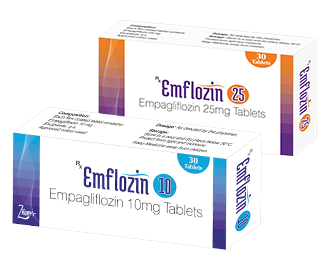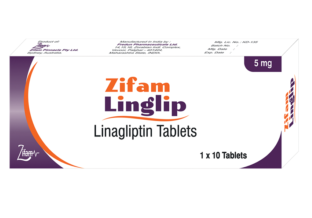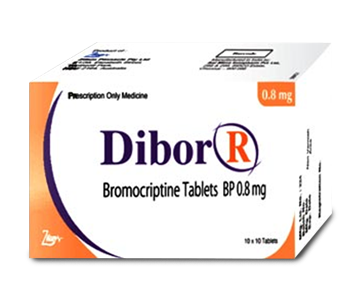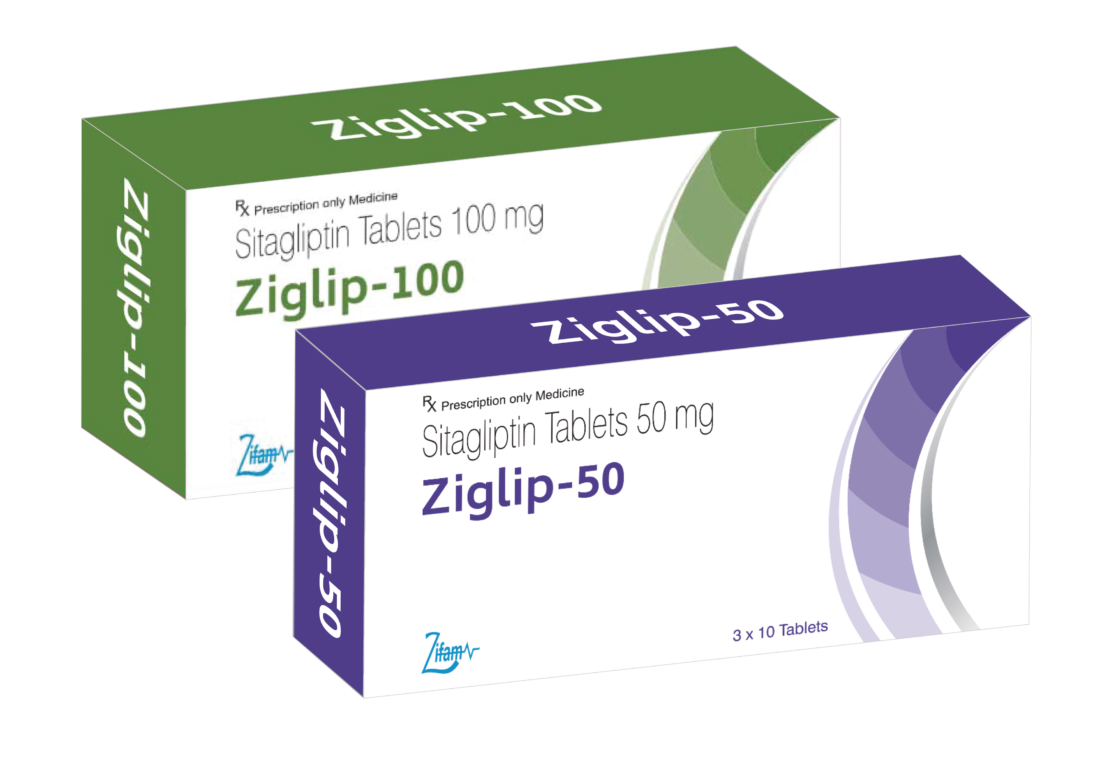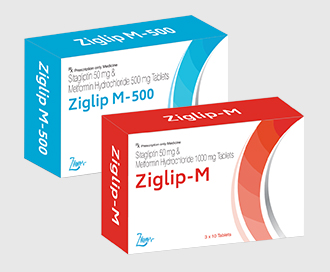Metnova 500/850
- ENG
- မြန်မာ
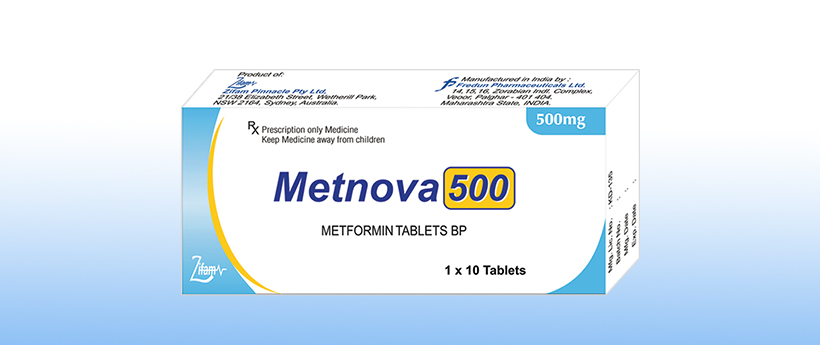
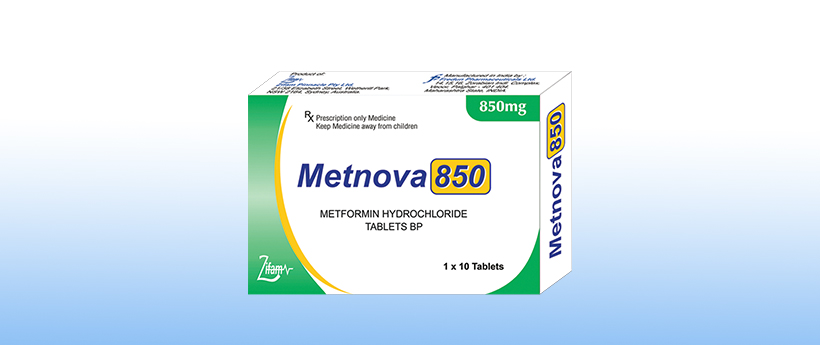
Composition:
Each film coated tablet contains:
Metformin Hydrochloride BP 500 mg
Excipients: q.s.
Colour: Titanium Dioxide BP
Pharmacological action:
Metformin is a biguanide with antihyperglycaemic effects, lowering both basal and postprandial plasma glucose. It does not stimulate insulin secretion and therefore does not produce
hypoglycemia.
It may act via 3 mechanisms:
(1) Reduction of hepatic glucose production by inhibiting gluconeogenesis and glycogenolysis
(2) In muscle, by increasing insulin sensitivity, improving peripheral glucose uptake and utilization
(3) And delay of intestinal glucose absorption.
Metformin stimulates intracellular glycogen synthesis by acting on glycogen synthase. It increase the transport capacity of all types of membrane glucose transporters (GLUT).
Therapeutic category: Blood glucose lowering drug
Therapeutic Indication.:
i) Treatment of type 2 diabetes mellitus, particularly in overweight patients, when dietary management and exercise alone does not result in adequate glycemic control.
ii) In adults, Metformin film-coated tablets may be used as monotherapy or in combination with other oral anti-diabetic agents or with insulin.
iii) In children from 10 years of age and adolescents, Metformin hydrochloride film-coated tablets may be used as monotherapy or in combination with insulin.
iv) A reduction of diabetic complications has been shown in overweight type 2 diabetic adult patients treated with metformin hydrochloride as first-line therapy after diet failure.
Posology and Method Administration:
Route of Administration: Oral
Adults:
Monotherapy and combination with other oral antidiabetic agents:
The usual starting dose is 500 mg or 850 mg Metformin hydrochloride 2 or 3 times daily given during or after meals.
Altar 10 to 15 days the dose should be adjusted on the basis of blood glucose measurement. A slow increase of dose may improve gastrointestinal tolerability.
The maximum recommended dose of is 3 g daily, taken as 3 divided doses.
Contraindications:
i) Hypersensitivity to Metformin orto any of the excipients.
ii) Diabetic ketoacidosis, diabetic pre-coma.
iii) Renal failure or renal dysfunction (creatinine clearance < 60 ml/min)
iv) Acute conditions with the potential to alter renal function such as:
– Dehydration,
– Severe Infection,
– Shock,
v) Acute or chronic disease which may cause tissue hypoxia such as:
– Cardiac or respiratory failure,
– Recent myocardial infarction,
– Shock
vi) Hepatic insufficiency, acute alcohol intoxication, alcoholism
vii) Lactation
Combination with insulin:
Metformin hydrochloride and insulin may be used in combination therapy to achieve better blood glucose control. Metformin hydrochloride is given at the usual starting dose of 500mg or 850mg metformin hydrochloride 2 or 3 times daily, while insulin dosage is adjusted on the basis of blood glucose measurements.
Elderly
Due to the potential for decreased renal function in elderly subjects, the dosage should be adjusted based on renal function.
Regular assessment of renal function is necessary.
Children and adolescents:
Monotherapy and combination with insulin
• Metformin hydrochloride film-coated tablets can be used in children from 10 years of age and adolescents.
• The usual starting dose is 500 mg or 850 mg metformin hydrochloride once daily, given during meals or after meals.
After 10 to 15 days the dose should be adjusted on the basis of blood glucose measurements. A slow increase of dose may improve gastrointestinal tolerability. The maximum recommended dose of metformin hydrochloride is 2 g daily, taken as 2 or 3 divided doses.
Contraindications:
i) Hypersensitivity to Metformin or to any of the excipients.
Ti)
Diabetic ketoacidosis, diabetic pre-coma.
il) Renal failure or renal dysfunction (creatinine clearance < 60
mi/min)
iv) Acute conditions with the potential to alter renal function such
as:
– Dehydration,
Severe infection,
Shock,
v) Acute or chronic disease which may cause tissue hypoxia such as:
– Cardiac or respiratory failure,
– Recent myocardial infarction,
Shock
vi) Hepatic insufficiency, acute alcohol intoxication, alcoholism
Vii Lactation
Warning & Precautions:
Lactic acidosis:
Lactic acidosis is a rare, but serious (high mortality in the absence of prompt treatment), metabolic complication that can occur due to Metformin accumulation. Reported cases of lactic acidosis in patients on Metformin have occurred primarily in diabetic patients with significant renal failure. The incidence of lactic acidosis can and should be reduced by assessing also other associated risk factors such as poorly controlled diabetes, ketosis, prolonged fasting, excessive alcohol intake, hepatic insufficiency and any condition associated with hypoxia.
Renal function:
As Metformin is excreted by the kidney, creatinine clearance (this can be estimated from serum creatinine levels using the Cockcroft-Gault formula) should be determined before initlating treatment and regularly thereafter:
: Aleast u to four times a year in panais wit creatinine
clearance levels at the limit of normal and in elderly subjects.
Decreased renal function in elderly subjects is frequent and asymptomatic, Special caution should be exercised in situations where renal function may become impaired, for example when initiating antihypertensive therapy or diuretic therapy and when starting therapy with an non-steroidal anti-inflammatory drug (NSAID)
Administration of iodinated contrast media:
The intravascular administration of iodinated contrast media in radiological studies can lead to renal failure. This may lead to Metformin accumulation and risk of lactic acidosis. Metformin must be discontinued prior to, or at the time of the test and not reinstituted until 48 hours afterwards, and only after renal function has been re-evaluated and found to be normal.
Surgery
Metformin should be discontinued 48 hours before elective surgery with general spinal or peridural anaesthesia. Therapy may be restarted no earlier than 48 hours following surgery or resumption of oral nutrition provided normal renal function has been established.
Children and adolescents:
The diagnosis of type 2 diabetes mellitus should be confirmed before treatment with metformin hydrochloride is initiated.
No effect of metformin hydrochloride on growth and puberty has been detected during controlled clinical studies of one-year duration but no long-term data on these specific points are available. Therefore, a careful follow-up of the effect of metformin hydrochloride on these parameters in metformin hydrochloride-treated children, especially pre-pubescent children, is recommended.
Children aged between 10 and 12 years:
Only 15 subjects aged between 10 and 12 years were included in the controlled clinical studies conducted in children and adolescents. Although efficacy and safety of metformin hydrochloride in these children did not differ from efficacy and safety in older children and adolescents, particular caution is recommended when prescribing to children aged between 10 and 12 years.
Other precautions:
All patients should continue their diet with a regular distribution of carbohydrate intake during the day. Overweight patients should continue their energy-restricted diet.
The usual laboratory tests for diabetes monitoring should be performed regularly.
Adverse effects:
In post marketing data and in controlled clinical studies, adverse event reporting in patients treated with Metformin SR was similar in nature and severity to that reported in patients treated with Metformin immediate release.
During treatment initiation, the most common adverse reactions are nausea, vomiting, diarrhoea, abdominal pain and loss of appetite, which resolve spontaneously in most cases.
Frequencies are defined as follows:
very common > 1/100
common >1/100 to < 1/10
uncommon > 1/1000 to < 1/100
rare > 1/10000 to < 1/1000
very rare <1/10000.
a) Metabolism and nutrition disorders
Very rare: Lactic acidosis Decrease of vitamin B,, absorption with decrease of serum levels during long-term use of metformin. Consideration of such an etiology is recommended if a patient presents with megaloblastic anaemia.
b) Nervous system disorders
Common: Taste disturbance
c)Gastrointestinal disorders
Very common: Gastrointestinal disorders such as nausea, vomiting, diarrhoea, abdominal pain and loss of appetite.
These undesirable effects occur most frequently during initiation of therapy and resolve spontaneously in most cases.
A slow increase of the dose may also improve gastrointestinal tolerability.
d) Hepatobiliary disorders
Isolated reports: Liver function tests abnormalities or hepatitis resolving upon metformin discontinuation.
e) Skin and subcutaneous tissue disorders
Very rare: Skin reactions such as erythema, pruritus, urticaria.
Drug interactions:
A) Concomitant use not recommended
a) Alcohol
Acute alcohol intoxication is associated with an increased risk of lactic acidosis, particularly in case of:
• Fasting or malnutrition,
• Hepatic insufficiency
b) lodinated contrast media
Intravascular administration of iodinated contrast media may lead to renal failure, resulting in Metformin accumulation and a risk of lactic acidosis.
Metformin hydrochloride must be discontinued prior to, or at the time of the test and not reinstituted until 48 hours afterwards, and only after renal function has been re-evaluated and found to be normal.
B) Combinations requiring precautions for use
Medicinal products with intrinsic hyperglycemic activity (e.g. glucocorticoids (systemic and local routes) and Sympathomimetics. More frequent blood glucose monitoring may be required, especially at the beginning of treatment. If necessary,
se required, asperaly as
adjust the Metformin dosage during therapy with the other drug and upon its discontinuation.
C) Diuretics, especially loop diuretics
They may increase the risk of lactic acidosis due to their potential to decrease renal function
Overdosage:
Hypoglycemia has not been seen with Metformin doses of up to 85 9, although lactic acidosis has occurred in such circumstances.
High overdose or concomitant risks of Metformin may lead to lactic acidosis. Lactic acidosis is a medical emergency and must be treated in hospital. The most effective method to remove lactate and Metformin is haemodialysis.
Pharmaceutical information:
Storage conditions:
Store in a cool and dry place below 30°C.
Protect from light and moisture
Keep medicine away from children.
Shelf Life: 36 months
Pack size: Blister pack of 10 tablets
Updated on 9/Feb/2024






